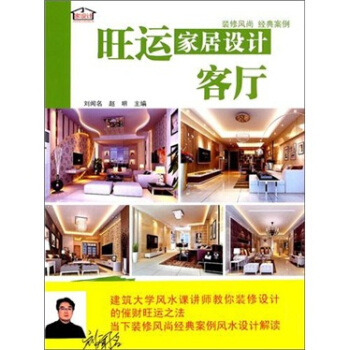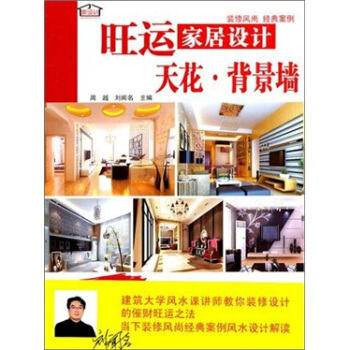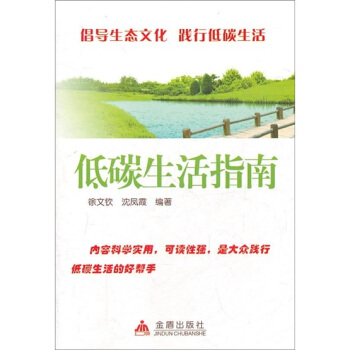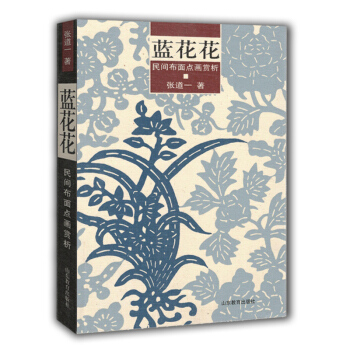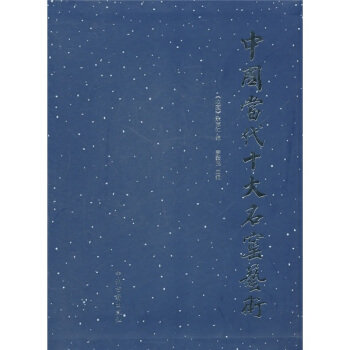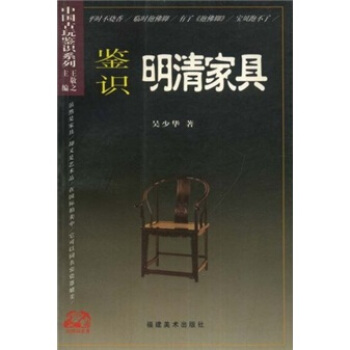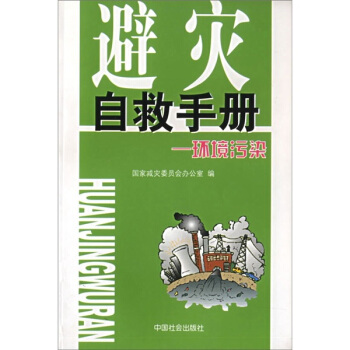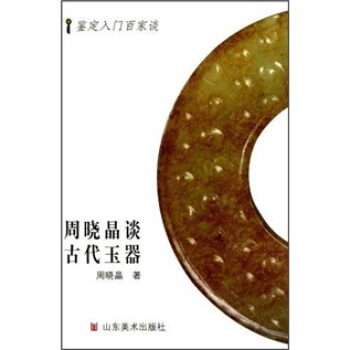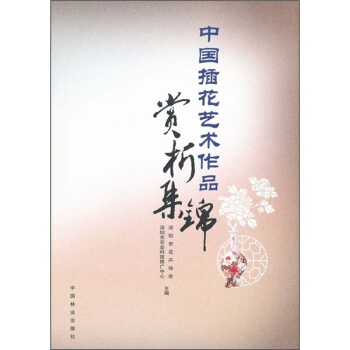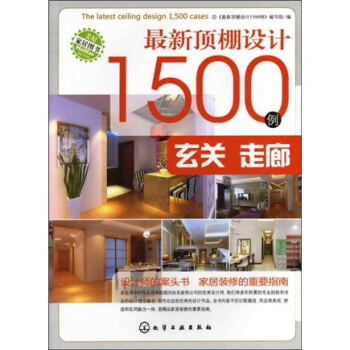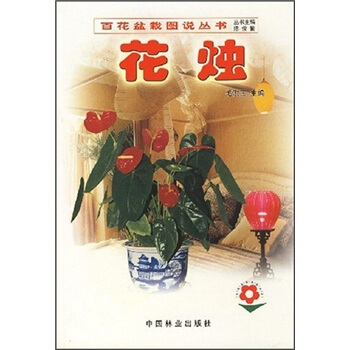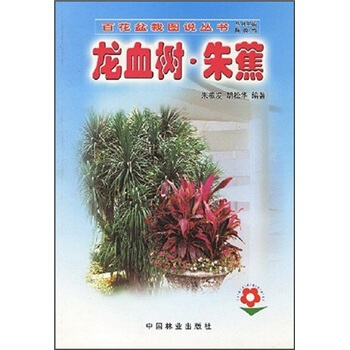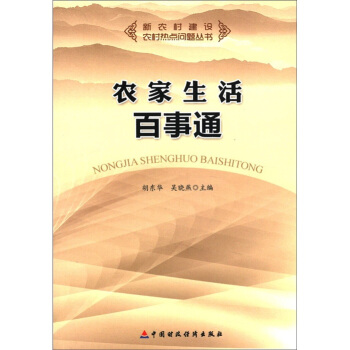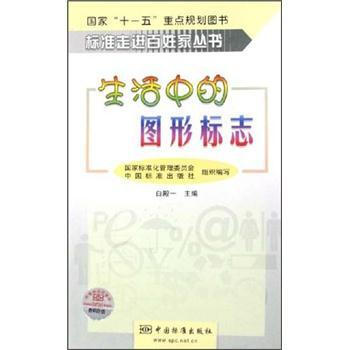![中国国宝系列:清代鼻烟壶(英文版) [Snuff Bottles in the Qing Dynasty]](https://pic.tinynews.org/10678873/58cd4042Nd7854cb6.jpg)

具体描述
内容简介
清代鼻烟壶是中西文化交融的结晶,玲珑之态让人爱不释手,鼻烟壶的发展贯穿整个清朝历史,真实地浓缩了中国的传统文化,小小鼻烟壶,集历代文化艺术精华于一炉,没有一项中国艺术工艺中能集这么多工艺变化于一身,近年来,鼻烟壶的投资和集藏价值不断攀升,引起国外朋友的浓厚兴趣。本书向外国读者介绍有关清代鼻烟壶的知识,引导读者欣赏种类繁多的清代鼻烟壶,并从中得到一种美的享受,具有一定的收藏价值。本画册资料丰富,图片精美,书中所有展品均藏于北京故宫博物院。
A snuff bottle, as a snuff container, represents a unique variety of China s ancient cultural relics. It first appeared in the royal court in the Emperor Kangxi Period (1661-1722) of the Qing Dynasty (1644-1911), became popular in the capital, and influenced the entire nation. It was made by large quantities in the royal and civil works.
This book introduces the qing dynasty snuff bottle.
作者简介
ZhangRong, born in 1963, graduated from the Department of History ofNankai University, majoring in museums. She has been working forthe Palace Museum in Beijing since 1985, and once served as deputydirector of the Palace Department, and director of the AncientObjects Department. She holds the academic title of researchfellow.Major works published: Models of AncientLacquerwork and Appreciation, Snuff Bottles--Cultural Relics inPalm and Ancient Lacquerwrok.
内页插图
目录
CONTENTS
Preface
Glass snuff bottles
Enameled Metal Body Snuff Bottles
Jade Snuff Bottles
Porcelain Snuff Bottles
Snuff Bottles Made of Other Materials
Internally Drawn Snuff Bottles
A Record of Auction of Collections
Catalogue of Snuff Bottle Materials
精彩书摘
Glass snuff bottles
Glass snuff bottles are produced using various technology means. Glass snuff bottles of the Qing Dynasty are characterized by the earliest fabrication time, the longest duration time, the largest number and the richest technology varieties. From the aspects of kinds and processing technologies of glass snuff bottles, we can have a view on the entire development path of glass making in the Qing Dynasty.
The places where glass can be fired mainly included the glass plant of the Palace Construction Section, Yanshen Town of Shandong Province (later known as Boshan), Guangzhou, Suzhou and Beijing and so on. In the 35th year of the Kangxi Period (1696), the royal glass plant was set up, attached to the Construction Section of the Royal Household Bureau. In the reign of Yongzheng, a branch was set up in the Summer Palace. After the establishment of the glass plant, many craftsmen were recruited from such places as Guangzhou and Shandong, etc.
According to records, in the reign of Emperor Kangxi, there was glass of being black, green, white, purple and grape colored, etc., but with no record of snuff bottles, letting alone the real objects. While in the reign of Emperor Yongzheng, there were snuff bottles made of such glass as monochrome glass, Gold–star colorful glass, colored wire wrapping glass, flower glass, cover glass, painted enamel glass, etc, while with the shapes covering octagonal shape, chicken drum, oil type, and so on. The production of glass snuff bottles reached the peak in the reign of Emperor Qianlong, featured by their great quantity, rich kinds and fine fabrication, which will be difficult for other dynasties to reach.
According to the Qing Dynasty’s principles and methods of classifying the glass works, glass snuff bottles can be divided into monochrome glass, cover glass, painted enamel glass, Gold–star glass and gold-painted glass, etc.
The monochrome snuff bottles were the mainstream at that time, which were continuously produced from the reign of Emperor Kangxi to Emperor Xuantong (1906–1967, the last emperor of China) . The cover glass snuff bottles could only be found in the reign of Emperor Qianlong. The glass embryo painted enamel snuff bottles emerged in the Kangxi Period, but those remained are mainly produced in the reign of Emperor Qianlong.
Gold–star glass, also known as "Wendou Lina stone", was only used in the reign of Emperor Qianlong. It is named like that because numerous golden spots flash inside the red–brown glass body. In the 6th year of the Qianlong Period (1741), under the participation and guidance of two western missionaries, namely Ji Wen and Tang Zhizhong, the gold–star glass snuff bottle were officially fired out in the glass plant of the Construction Section. The gold–star glass snuff bottles are rather rare and valuable in the Qing Dynasty due to the little quantity. Now there are only about 40 gold–star glass wares collected in the Palace Museum in Beijing, including only about 5 gold–star glass snuff bottles. The gilt glass was first found in the reign of Emperor Yongzheng. While in the Archives of the Qing Dynasty made in the reign of Emperor Qianlong, it is recorded as "blue glass vase painted with gold flowers and black glass snuff bottle with gilt ". Only one gold-painted glass ware in the reign of Emperor Qianlong, namely the gold-painted snuff bottle painted with landscapes and characters, is collected in the Palace Museum and very valuable.
前言/序言
Preface
A snuff bottle, as a snuff container, represents a unique variety of China’s ancient cultural relics. It first appeared in the royal court in the Emperor Kangxi Period (1661–1722) of the Qing Dynasty (1644–1911), became popular in the capital, and influenced the entire nation. It was made by large quantities in the royal and civil works. This was closely associated with the prevailing customs of taking snuff, and also related to the vigorous advocacy and participation of the emperors. Snuff bottles have become valuable artistic works appreciated, collected by people, although they were initially practical items.
There is a legend about the appearance of snuff. In the middle of the 16th century, a European tobacco merchant ailed from a heavy stock that mildewed and deteriorated because of poor operation. While feeling desperate about the tobacco that piled up, the merchant smelled an unusual smell with his nose from the tobacco that mildewed. The smell was so unique and fascinating that he couldn’t help but breathing it with greed, and had an unprecedented experience. Enjoying this special taste, the merchant thought of another way to make a fortune. Shortly after that, the tobacco merchant, who almost went bankrupt, announced he had invented a new tobacco—snuff. Since then, people no longer needed to light cigarettes with fire, and no longer annoyed others because of dense smoke. This was one of the stories about how snuff came into being. Although it is impossible to judge whether this story is true or not, this story itself does make sense.
In reality, to make true snuff, the first step is to grind superior tobacco into extremely fine powder, then flavor and precious medical materials such as muskiness are added to the powder, and finally the mixture is fine processed and sealed in wax balls for aging in several years before normal use. After aging in wax balls for several and even tens of years, snuff will have multiple colors like black purple, dark yellow and light yellow, and smell mellow and acrid. Specifically, there are mainly five smells—acid, smell of mutton, paste, soy and sweet. Sometimes, a snuff may have several smells, and acridity is the best. However, even an acrid snuff offers limitless mellowness after acridity.
Just as American natives invented the tobacco lighted with fire to mitigate the fatigue of labor, Europeans or Chinese favored snuff, possibly because of its special functions needed by people. These functions mainly include several aspects: First, to refresh oneself and strike the eye; second, to prevent disease; third, to relax oneself and activate blood; fourth, to contain the social meanings like friendship, harmony and respect; and finally, to act as a token used to offer sacrifice to gods, Buddha and ancestors.
According to the mainstream opinion, Matteo Ricci (1552–1610), an Italian missionary, came to China in the Emperor Wanli Period (1573–1620) of the Ming Dynasty (1368–1644) . He landed in Guangdong and traveled northwards to visit the emperor in Beijing. He offered his Italian snuff to the officials he met on the way, and also gave some precious snuff to the emperor. Fond of the snuff at the first glance, Emperor Wanli (Zhu Yijun, 1563–1620) highly praised Matteo Ricci, and offered him a high rank. This was known by some other Western envoys. Then, snuff became the best gift for Chinese emperors and local officials, and the habit of smelling snuff also spread quickly in China.
Snuff bottles, small but exquisite, are favored because of both changeable moldings and colorful patterns. At the same time, their delicate packages are also fascinating. A snuff bottle is composed of a bottle, a bottle lid, a bottle spoon, a snuff plate and a package. Besides special appreciation, people used snuff bottles almost in the same way, and smelled snuff in unique manners. Some emptied a little snuff and then used a thin pipe to smell it; some poured snuff on the prominence of the thumb, then coated it to the noses and smelled it with force; and some in pursuit of taste fetched some snuff out of the snuff bottle, put it on a special snuff plate, then held the snuff plate with one hand, dipped some bottle with the thumb of the other hand, put the snuff near the noses and took it forcefully. After taking in the snuff, people would close their eyes to enjoy the snuff, then sneeze with relaxation and recall the large charge.
The texture of the bottle lid could match the snuff bottle itself. Bottle lids feature rich texture and fine workmanship. The most common and also the most standard bottle lid is the gold plated copper lid with carved flower.
......
用户评价
这本书的出现,宛如一股清流,瞬间吸引了我这个对中国传统工艺尤其是鼻烟壶情有独钟的读者。早些时候,我只对鼻烟壶的一些基本概念有所了解,比如它们是用作盛装鼻烟的容器,以及在清代达到了一个艺术高峰。但具体到清代鼻烟壶的风格演变、材质选择、制作工艺、以及它们背后所蕴含的文化意义,我一直觉得缺乏一个系统而深入的了解。这本书的英文标题“Snuff Bottles in the Qing Dynasty”直击要害,让我看到了深入探索的希望。翻开书页,我被其精美的装帧和考究的排版所折服,这本身就预示着内容的分量。作者在引言部分似乎就点出了清代鼻烟壶艺术的独特之处,它不仅仅是物质上的器物,更是承载了历史、文化、审美的多重载体。我期待着书中能详尽地解析清代不同时期鼻烟壶的特点,比如从早期相对朴素的造型,如何逐渐发展出繁复精美的珐琅彩、瓷器、玻璃、玉石等材质的鼻烟壶,以及各个时期代表性的纹饰、构图和色彩运用。更重要的是,我希望这本书能够揭示鼻烟壶在清代社会生活中扮演的角色,它们是如何成为文人雅士、官宦阶层彰显身份、品味甚至政治抱负的象征。作为一名爱好者,我渴望通过这本书,能够更清晰地辨识不同类型的鼻烟壶,理解其价值所在,并且能够更深刻地体会到中国古代工匠的精湛技艺和不凡创造力。这本书的出现,无疑为我打开了一扇通往清代鼻烟壶艺术世界的大门,我迫不及待地想要深入其中,汲取其中的知识和美学养分。
评分对于任何一个热爱中国古代艺术的收藏家而言,一本专注于某个特定领域的深度专著,其价值是难以估量的。我之所以对《中国国宝系列:清代鼻烟壶(英文版)》抱有极高的期待,正是因为它精准地聚焦于清代鼻烟壶这一独特而迷人的艺术品类。我所了解的鼻烟壶,很多时候仅仅是博物馆展柜里静静陈列的器物,其背后的故事和艺术价值往往被大众所忽视。这本书的出现,恰好填补了这一认知上的空白。我期望书中能够细致入微地剖析清代鼻烟壶的材质多样性,从温润如玉的翡翠、玛瑙,到晶莹剔透的玻璃、水晶,再到精美绝伦的珐琅彩和瓷器,每一款材质都承载着不同的工艺和审美追求。更令我着迷的是,我期待书中能对不同时期鼻烟壶的造型和装饰风格进行清晰的梳理和对比,例如康乾盛世时期的雍容华贵,晚清时期逐渐显露的细腻婉约,以及其中蕴含的时代背景和社会风貌。我特别想了解,鼻烟壶的纹饰,如龙凤、花鸟、山水、人物故事等,是如何随着时代变迁而演变的,它们又承载了怎样的吉祥寓意和文化内涵。此外,我也希望能看到关于制作工艺的详细介绍,比如如何进行雕刻、彩绘、烧制,以及那些失传或鲜为人知的技法。这本书,对我而言,不仅仅是一本关于鼻烟壶的书,更是一把钥匙,能够解锁一段被历史尘封的艺术传奇,让我得以窥见清代社会的精致生活和高超的工艺水平。
评分对于像我这样,在艺术院校学习过一些雕塑和设计专业的学生来说,任何一件精美的工艺品都像一本立体的教科书。《中国国宝系列:清代鼻烟壶(英文版)》这本书,以其“国宝”的定位,以及对“清代鼻烟壶”这一特定主题的深入挖掘,立刻引起了我的强烈关注。我一直对鼻烟壶的立体造型和精巧工艺赞叹不已,而清代更是鼻烟壶发展史上的一个高峰。我希望这本书能够从一个艺术创作的角度,为我提供更深入的洞察。我期待书中能够详细介绍清代鼻烟壶在造型设计上的创新和演变,比如如何巧妙地利用材质本身的特点,创造出各种动物、人物、植物等形态,以及那些将平面装饰转化为立体造型的精妙手法。在色彩运用方面,我也希望能够看到关于清代鼻烟壶色彩搭配的深入分析,无论是素雅的单色,还是斑斓的套色,背后都蕴含着怎样的审美取向和文化象征。此外,我也特别关注鼻烟壶的雕刻和绘画技艺,例如那些在玻璃胎上进行内画、外画的绝技,以及在瓷胎、玉石上的精细雕琢,这些工艺的难度和精细程度,都让我感到惊叹。我希望这本书能够提供大量的实例,并配以高质量的图片,以便我能够清晰地观察和学习这些艺术手法。这本书,对我而言,不仅仅是一次知识的获取,更是一次关于艺术创作的灵感激发。
评分长期以来,我一直对中国古代的玻璃工艺,尤其是那些带有异域风格的工艺品,有着特别的兴趣。而清代鼻烟壶,恰恰是这种工艺与文化交流的完美体现。《中国国宝系列:清代鼻烟壶(英文版)》这本书的出现,给了我一个深入探索这一领域的绝佳机会。我非常期待书中能够详细介绍清代玻璃鼻烟壶的制作工艺和艺术风格。我希望书中能够梳理出清代玻璃鼻烟壶的起源和发展,以及其在材质、色彩、造型等方面的特色。例如,那些从西方传入的玻璃制作技术,是如何在中国得到创新和发展的?那些晶莹剔透、色彩斑斓的玻璃鼻烟壶,是如何在匠人的手中诞生的?我尤其对内画鼻烟壶和外画鼻烟壶的工艺感到着迷。在狭小的瓶口内进行精细的绘画,这需要何等的耐心、技巧和眼力?我希望书中能够提供大量的实例,展示那些精美的内画、外画作品,并对其艺术价值和文化内涵进行深入的解读。鼻烟壶上的绘画内容,无论是山水、人物,还是花鸟,都展现了怎样的东方艺术魅力?我希望这本书能够通过精美的图片和详实的文字,让我能够更加直观地感受到清代玻璃鼻烟壶所蕴含的艺术魅力和文化意义,以及它们在东西方文化交流中所扮演的重要角色。
评分作为一名对中国历史和文化有着浓厚兴趣的外国读者,我一直觉得很多中国艺术品类在国际上的认知度还有待提高。《中国国宝系列:清代鼻烟壶(英文版)》的出版,无疑是一件令人振奋的事情。在我看来,清代鼻烟壶本身就是一件充满魅力的艺术品,它将实用性与艺术性完美结合,同时又折射出中国古代社会生活的方方面面。我非常期待这本书能够从一个更宏观的视角,为国际读者呈现清代鼻烟壶的独特价值。我希望书中不仅仅是罗列各种鼻烟壶的图片和简单的介绍,而是能够深入探讨鼻烟壶在清代社会中的地位和作用。例如,鼻烟壶是如何从一种简单的吸食工具,演变成一种重要的社交媒介和身份象征的?它在宫廷、官场、文人圈以及普通百姓的生活中,分别扮演了怎样的角色?我特别好奇的是,鼻烟壶的设计和材质选择,是否与当时的政治气候、经济状况、审美潮流有着紧密的联系。书中如果能提供一些关于鼻烟壶的收藏历史、市场价值以及鉴赏要点,那将对我这样初涉此领域的读者非常有帮助。我希望通过这本书,能够更直观地感受到中国古代工匠的智慧和创造力,理解鼻烟壶背后所蕴含的哲学思想和文化传统。这本书的英文版本,更是为我这样的非中文母语者提供了极大的便利,让我能够跨越语言障碍,直接与中国悠久的艺术文明对话。
评分我一直对中国的瓷器艺术情有独钟,而清代作为中国瓷器发展史上一个重要的时期,留下了无数精美的作品。《中国国宝系列:清代鼻烟壶(英文版)》这本书,以其对清代鼻烟壶的专题研究,让我看到了一个深入了解这一领域的机会,尤其是那些以瓷器为载体的鼻烟壶。我非常期待这本书能够详细介绍清代瓷器鼻烟壶的制作工艺和艺术特点。我希望书中能够清晰地梳理清代不同时期瓷器鼻烟壶的发展脉络,例如从早期仿古器的风格,到康乾盛世时期的精美瓷器,再到晚清时期的一些创新和变化。我尤其想了解,在小巧的鼻烟壶上,如何能够实现如景德镇御窑厂生产的瓷器一般的精湛工艺,例如釉色、胎质、器型以及彩绘技法。我希望书中能够展示那些经典的瓷器鼻烟壶,例如粉彩、珐琅彩、青花等,并对其艺术风格和文化内涵进行深入的解读。鼻烟壶上的绘画内容,无论是山水人物、花鸟走兽,还是吉祥寓意,都承载着怎样的时代信息和文化观念?我希望书中能够提供大量的精美图片,让我能够近距离欣赏这些瓷器鼻烟壶的细节之美,并从中体会到中国古代陶瓷工匠的精湛技艺和卓越创造力。这本书,对我而言,是连接中国瓷器艺术与清代生活文化的重要纽带。
评分作为一名历史爱好者,我对清代社会的方方面面都充满好奇,而鼻烟壶作为那个时代的一种独特消费品和艺术品,更是让我觉得充满了探索的价值。《中国国宝系列:清代鼻烟壶(英文版)》的出现,让我看到了一个深入了解清代鼻烟壶的绝佳机会。我希望这本书不仅仅是介绍鼻烟壶本身的形制和美学,更希望它能够成为一把钥匙,打开我理解清代社会生活、经济状况、文化交流乃至政治生态的窗口。我期待书中能够探讨鼻烟壶的起源和发展,以及它如何在清代社会普及开来。例如,鼻烟和鼻烟壶是如何从西方传入中国,又如何在中国本土化,并最终成为一种独特的文化现象的?鼻烟壶的制作和贸易,是否也反映了当时的经济发展水平和对外贸易情况?我尤其对鼻烟壶的材质来源和工艺流派感兴趣,这些背后是否也涉及到了当时的地理、技术和文化交流?我希望书中能够通过鼻烟壶这一载体,折射出清代社会的消费文化、审美取向以及人际交往模式。此外,我也希望了解鼻烟壶在不同历史时期(如康乾盛世、晚清衰落等)所呈现出的不同面貌,以及这些变化背后所蕴含的历史信息。这本书,对我来说,不仅仅是一本关于鼻烟壶的图录,更是一部关于清代社会生活的微观史。
评分我是一名对中国古代服饰和妆容颇有研究的爱好者,而在我的研究过程中,鼻烟壶常常作为清代贵族女性的随身饰品而出现,因此我一直对鼻烟壶产生了浓厚的兴趣。《中国国宝系列:清代鼻烟壶(英文版)》这本书,恰好满足了我对这一领域深入了解的愿望。我一直好奇,鼻烟壶在清代女性的社交和日常生活中,扮演了怎样的角色?它们是如何与服饰、发髻、妆容相搭配,成为整体造型的一部分的?我希望书中能够从一个更广阔的文化视角,解读鼻烟壶的意义。我期待书中能详细介绍不同材质、不同风格的鼻烟壶,以及它们在不同社会阶层的女性中所受到的欢迎程度。例如,哪些材质的鼻烟壶更受宫廷贵妇的青睐,而哪些又更适合普通仕女?鼻烟壶的图案和纹饰,是否也蕴含着与女性相关的吉祥寓意,比如象征美丽、贞洁、福气等?我希望书中能提供一些清代女性使用鼻烟壶的生动场景描绘,让读者能够身临其境地感受那个时代的风情。此外,我也对鼻烟壶的制作过程充满好奇,尤其是那些小巧精致、细节繁复的鼻烟壶,是如何在匠人的手中诞生的?这本书,对我来说,是连接物质文化与社会生活的一座桥梁,让我能更全面地理解清代女性的生活方式和审美情趣。
评分作为一个对中国古代哲学和美学有着浓厚兴趣的读者,我一直认为,艺术品不仅仅是物质的存在,更是精神的载体。《中国国宝系列:清代鼻烟壶(英文版)》这本书,恰好能让我从一个全新的角度,去审视清代鼻烟壶所蕴含的哲学思想和美学追求。我希望书中能够不仅仅是介绍鼻烟壶的材质和工艺,更能深入探讨鼻烟壶的设计理念和文化内涵。我期待书中能够解读鼻烟壶的造型、纹饰以及材质选择背后所体现的中国传统哲学思想,例如天人合一、阴阳五行、道法自然等。鼻烟壶的圆形、方形、八角形等不同造型,是否也暗含着特定的宇宙观和哲学理念?那些繁复的纹饰,如龙、凤、花卉、山水等,除了装饰作用外,是否也承载着人们对和谐、秩序、永恒的追求?我希望书中能够通过大量的实例,来阐释这些抽象的哲学概念。此外,我也希望能够看到书中对清代鼻烟壶美学风格的深入分析,例如其线条的流畅性、色彩的搭配、整体的比例协调性等,这些都体现了中国古代匠人怎样的审美情趣?这本书,对我来说,不仅仅是一次艺术的鉴赏,更是一次关于中国传统哲学和美学的深度探索。
评分长久以来,我对中国古代的漆器工艺情有独钟,而当我知道《中国国宝系列:清代鼻烟壶(英文版)》这本书中可能包含大量关于漆绘鼻烟壶的内容时,更是按捺不住内心的激动。鼻烟壶作为一种精巧的器物,尤其是在漆器工艺的加持下,更是展现出无与伦比的艺术魅力。我非常期待这本书能够深入挖掘清代漆绘鼻烟壶的艺术精髓。我希望书中能够详细介绍清代漆绘鼻烟壶的制作工艺,例如景泰蓝、剔红、雕漆等技法的运用,以及这些技法在鼻烟壶上的独特表现。我希望能够看到关于漆绘鼻烟壶的色彩运用、图案构图以及所传达的文化寓意的详细解读。哪些题材的图案更受当时人的喜爱?它们又象征着怎样的吉祥寓意?我特别想了解,在小巧玲珑的鼻烟壶上,如何能够实现如此精细的雕刻和绘制,这背后凝聚了多少匠人的心血和智慧?我希望书中能够提供大量的细节图,以便我能够清晰地观察到每一处精美的雕刻线条和细腻的色彩晕染。此外,我也希望书中能探讨不同时期漆绘鼻烟壶的风格演变,从早期相对质朴的设计,到后期日趋繁复华丽的风格,背后又反映了怎样的时代变迁和审美变化?这本书,对我来说,是一次深入体验中国传统漆器艺术的绝佳机会。
相关图书
本站所有内容均为互联网搜索引擎提供的公开搜索信息,本站不存储任何数据与内容,任何内容与数据均与本站无关,如有需要请联系相关搜索引擎包括但不限于百度,google,bing,sogou 等
© 2026 book.idnshop.cc All Rights Reserved. 静思书屋 版权所有

